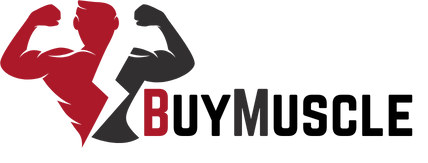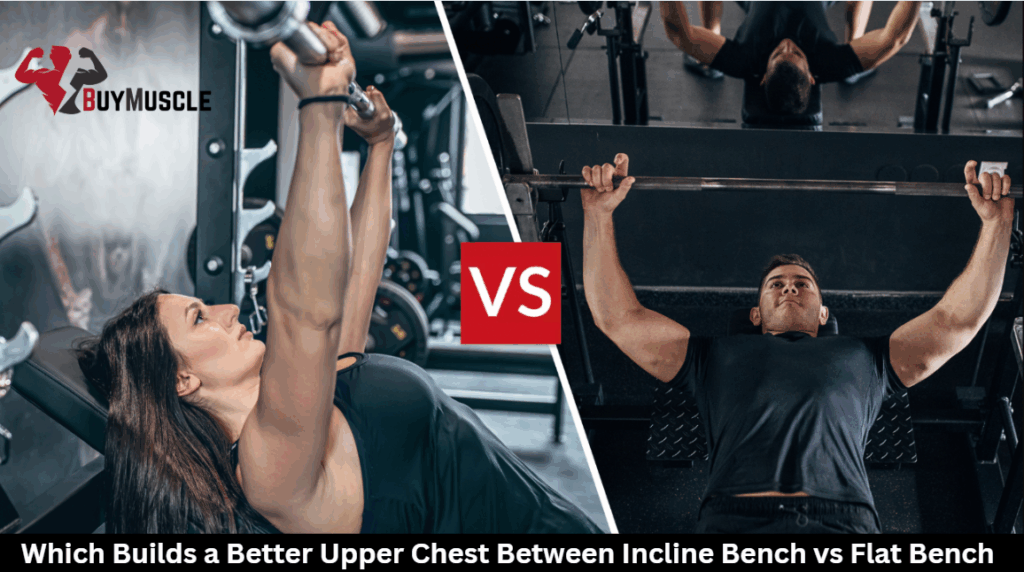You’ve probably noticed that some lifters have that impressive upper chest shelf while others don’t, despite both groups hammering the bench press regularly. The difference often comes down to exercise selection, specifically, the battle between the incline and the flat bench press. While the flat bench might let you move more weight, the incline variation could be your missing key to upper pectoral development.
So which deserves more of your precious gym time? The answer isn’t as straightforward as you might think.
Key Differences Between Incline and Flat Bench Press
Mechanics define the fundamental distinction between these two bench press variations. When you’re on an incline bench, typically set between 15-45 degrees, you’ll engage your upper chest fibers and anterior deltoids more intensely. This angle shifts the primary load from your mid-chest to the clavicular head of your pectoralis major.
Flat bench, by contrast, distributes tension more evenly across your entire chest, with greater emphasis on the sternal (middle) portion. The bench angle directly influences muscle activation patterns – steeper inclines increasingly recruit shoulder muscles while reducing overall chest hypertrophy potential.
For peak upper chest development, the incline vs flat bench debate isn’t about which is superior, but rather understanding how each targets different regions of your pectoral muscles with varying degrees of intensity.

Muscle Activation and Biomechanics
The angle of the bench greatly alters which muscle fibers activate during your press. When you perform an incline press, the upper fibers of your pectoralis major engage more intensely, with EMG studies confirming notably higher upper chest recruitment compared to the flat bench.
Your bar path comparison between the two exercises reveals distinct movement patterns. During incline presses, the bar travels at an angle that creates greater tension in the clavicular head of the chest, while also recruiting more anterior deltoid assistance.
Bench press angle directly correlates with muscle activation patterns. Steeper inclines shift emphasis toward shoulders, while 15-30° angles maximize upper chest engagement while minimizing shoulder takeover. It explains why incline press effectiveness for upper chest development is superior when performed with proper technique and appropriate angles.

Strength and Progression Potential
When comparing strength development between these exercises, you’ll notice the flat bench consistently allows for heavier loads than incline pressing. It happens because the flat bench press recruits more total muscle mass and offers ideal mechanical leverage, creating a stronger foundation for overall chest development.
Your incline bench press numbers will typically be 20-30% lower than your flat barbell chest press, primarily due to increased shoulder involvement and reduced pectoral mechanical advantage. Despite this strength discrepancy, don’t underestimate incline work for upper chest gains. It’s essential for complete development.
For ideal strength training progression, incorporate both movements strategically. Begin with whichever lift addresses your primary weakness while using the other as an accessory movement to guarantee balanced development across your entire chest.
Aesthetic Impact and Chest Shape
Beyond strength numbers lies the visual impact of your chest development, which often becomes the true measure of success for many lifters. The science behind incline bench training confirms its superior ability to target upper pec fibers, creating that coveted shelf-like appearance above your mid-chest.
Flat bench benefits include overall pec muscle targeting, building foundational thickness and width that creates an impressive silhouette. However, relying solely on flat pressing often leaves the upper chest lagging, creating a bottom-heavy aesthetic.
For peak chest shape, you’ll need both exercises. The incline bench sculpts your upper chest definition, while flat work builds the mass and fullness. Together, they create balanced proportions. The hallmark of aesthetic impact that separates average physiques from exceptional ones.

When to Prioritize Incline or Flat Bench
Deciding which bench press variation deserves priority in your training program depends largely on identifying your specific weaknesses and goals. If you notice your upper chest lacks development compared to your mid-chest, make the incline press your primary resistance training movement. This targeted approach enhances gym performance where you’re weakest.
Conversely, if you’re building foundational strength or seeking overall chest development, the flat bench remains the best chest press variation for general mass and power. It allows heavier loading and recruits more total muscle fibers.
The most effective strategy is periodization. Prioritize incline work during phases focused on aesthetics and upper chest development, then shift to flat bench during strength-building cycles. This balanced approach guarantees complete pectoral development without neglecting any region.
Programming Strategies for Optimal Growth
Effective programming for chest development requires more than simply choosing between an incline and a flat bench. It demands the strategic implementation of both exercises. Start your workout with whichever movement aligns with your primary goal. Use an incline bench for upper chest emphasis or a flat bench for overall power development.
For incline work, vary your angles between 15° and 45° to target different portions of the upper chest. Lower angles (15-30°) hit the sweet spot between activation and load capacity.
Apply progressive overload to both movements by gradually increasing weight, volume, or decreasing rest periods. Consider rotating priorities every 4-6 weeks, giving each bench position time as your primary movement. This periodization prevents plateaus while ensuring balanced development across your entire chest musculature.
Frequently Asked Questions
Do Genetics Influence Which Bench Press Works Better for Me?
Yes, your genetics determine your chest muscle fiber distribution and insertion points, affecting how you respond to different bench angles. You’ll need to experiment to find what works best for your unique anatomy.
Can Women Benefit Equally From Incline and Flat Bench?
Yes, you’ll benefit equally from both exercises regardless of gender. Your anatomy is similar to men’s for chest muscles, though you might need different loading strategies based on your strength levels and goals.
How Does Grip Width Affect Muscle Targeting on Different Benches?
Grip width considerably changes muscle targeting. Wider grips on flat benches hit more chest, while narrower grips engage triceps. On incline benches, your wide grip emphasizes upper pecs, and narrow grip shifts focus to shoulders.
Are Incline Dumbbells Superior to Incline Barbell for Upper Chest?
Incline dumbbells aren’t necessarily superior, but they offer a better range of motion and prevent muscle imbalances. You’ll get more stabilizer activation and can achieve a deeper stretch with dumbbells than with a barbell.
Should Beginners Master Flat Bench Before Attempting Incline Variations?
Yes, you should master the flat bench first. It develops foundational strength and proper form. Once you’re comfortable with the basic movement pattern, you’ll shift more safely and effectively to incline variations for upper chest development.








